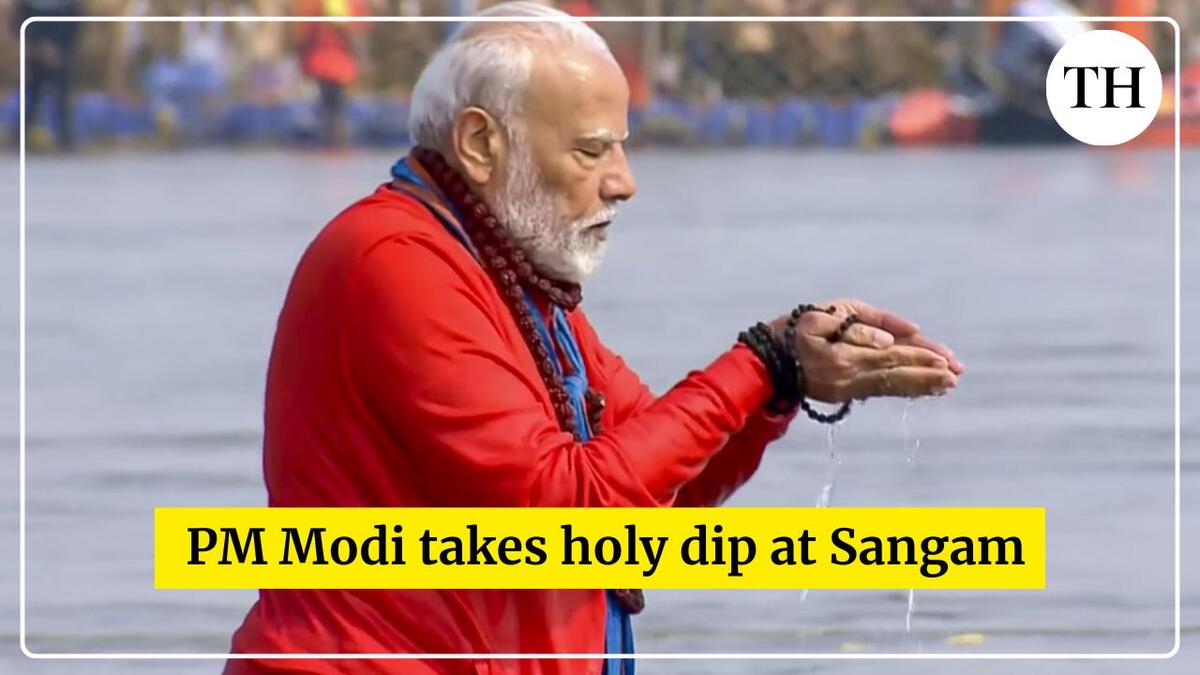 |
|
Prime Minister Narendra Modi's participation in the Maha Kumbh Mela in Prayagraj, Uttar Pradesh, on February 5th, 2025, serves as a powerful example of the intersection of politics and religious observance in India. His presence at such a significant Hindu pilgrimage underscores the complex relationship between the ruling party and the religious demographics of the nation. The event, drawing millions of devotees, provides a prime opportunity for political leaders to connect with a vast and influential segment of the population. Modi's participation, captured in images showing him dressed in traditional attire and performing ritualistic actions, is likely to resonate strongly with many Hindu voters, reinforcing his image as a devout Hindu leader committed to the nation's cultural heritage.
The symbolic act of taking a holy dip at the Triveni Sangam, the confluence of the Ganga, Yamuna, and mythical Saraswati rivers, holds immense religious significance for Hindus. This ritual, imbued with spiritual cleansing and purification, carries considerable weight within the context of the Kumbh Mela, a gathering considered one of the largest religious congregations globally. Modi's engagement in this ritual, accompanied by Chief Minister Yogi Adityanath, further solidifies his connection to the religious sentiments of the population. It allows him to showcase not only his political leadership but also his adherence to traditional Hindu practices, possibly influencing public perception and fostering a sense of unity.
The Maha Kumbh Mela itself is an event of immense cultural and historical significance. Held every 12 years, the pilgrimage attracts millions of pilgrims from across India and the world. The sheer scale of the event, with over 38 crore pilgrims reported by the Uttar Pradesh government, highlights its global reach and influence. The event also presents a significant logistical challenge, requiring extensive security measures, infrastructure management, and sanitation efforts. The government's ability to manage this event effectively showcases its administrative capabilities, thereby impacting public perception of governance. Modi's presence, therefore, doesn't only convey religious devotion but also tacitly highlights the government’s management of a large-scale religious event.
Furthermore, the event offers a significant media opportunity, amplifying the Prime Minister's visibility and allowing him to disseminate his political messaging to a vast national and international audience. Images and videos of the Prime Minister participating in the religious rituals will be widely circulated, reinforcing his image and potentially shaping public opinion. The media coverage itself becomes an integral part of the political landscape, influencing the public narrative surrounding the Prime Minister's leadership and the government's approach to religious affairs. This strategic use of religious events for political advantage is a common feature in the Indian political context, where religion often plays a significant role in shaping voter preferences and political strategies.
Beyond the immediate political implications, the Kumbh Mela's economic impact is considerable. The influx of millions of pilgrims generates significant revenue for the local economy, creating opportunities in tourism, hospitality, and retail sectors. This economic boost can positively influence public perception of the government, linking their leadership with economic prosperity and development. Therefore, the Prime Minister's participation extends beyond a simple religious observance; it becomes a complex political strategy with multifaceted implications for governance, public perception, and economic impact.
Finally, the Prime Minister's visit also highlights the ongoing tension between secularism and religious practice within India. While India is constitutionally a secular nation, religion continues to play a significant role in shaping political discourse and electoral outcomes. The Prime Minister's actions and participation in such religious events are regularly scrutinized by both supporters and critics, further highlighting the complex and evolving nature of the relationship between religious identity and political leadership in India. This scrutiny underscores the need for careful consideration of the delicate balance between religious freedom and the political exploitation of religious sentiments.
Source: PM Modi at Maha Kumbh Mela, takes holy dip at Triveni Sangam
